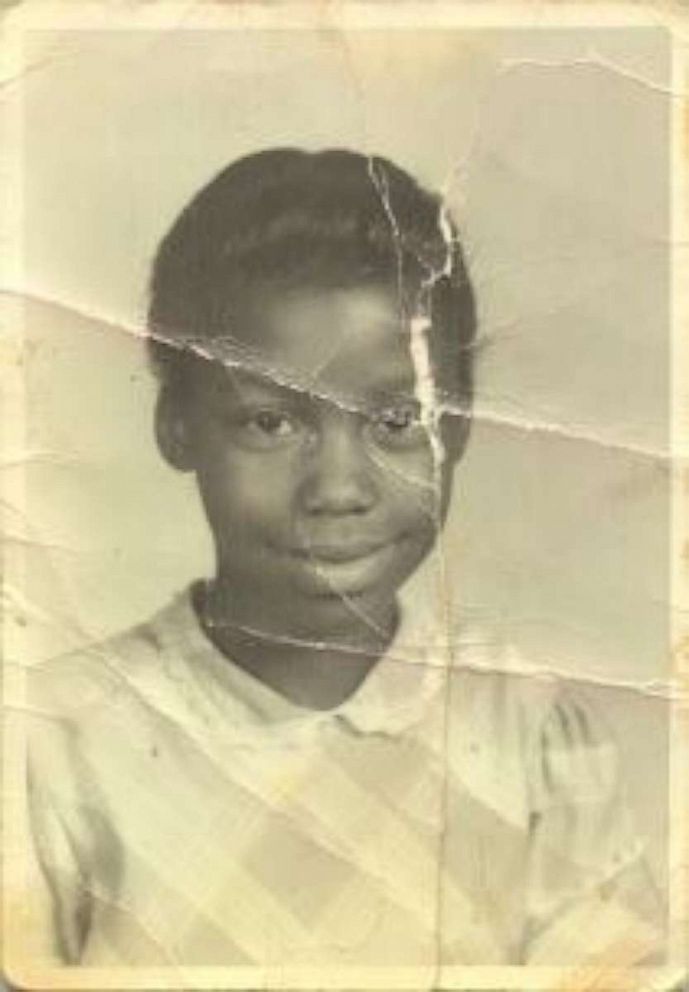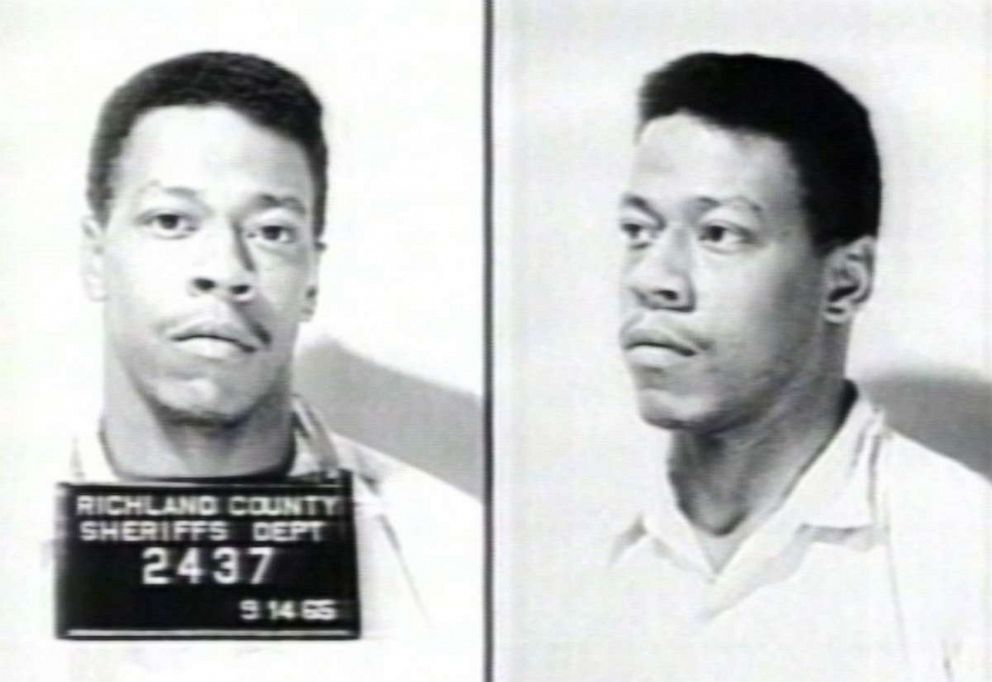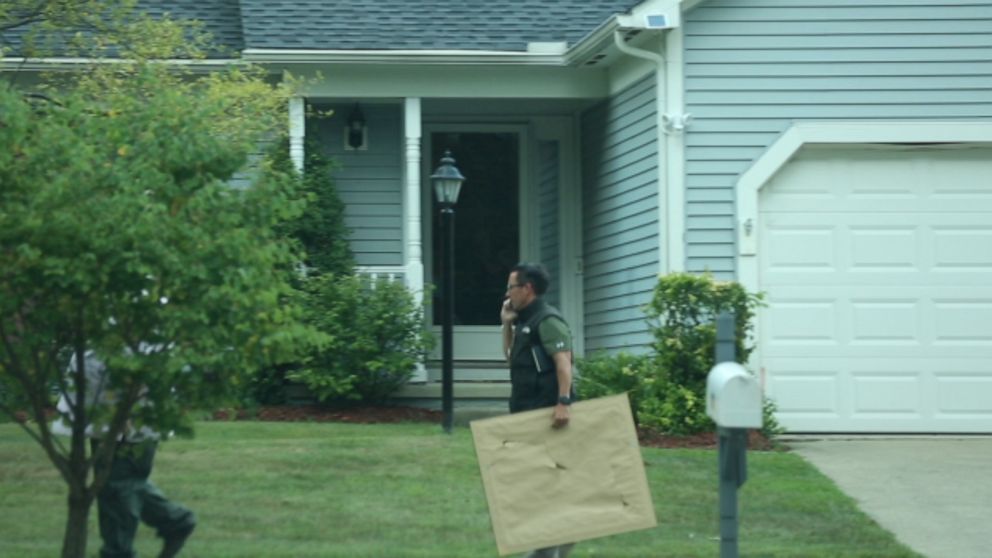'Have You Seen This Man' podcast: US Marshals renew calls for tips to find escaped death row inmate
Lester Eubanks is the subject of one of the nation's most intense manhunts.
This is an ABC News podcast, "Have You Seen This Man?," hosted by 'The View's' Sunny Hostin. It follows the U.S. Marshals' ongoing mission to find Lester Eubanks, a dangerous convict who escaped police custody in 1973 and has never been found.
Listen and subscribe on Apple Podcasts, Google Podcasts, iHeartRadio, Pandora, Spotify, Stitcher and TuneIn.
His crime was brutal. His escape, unbelievable. And now, after nearly half a century on the run, a one-time death row inmate named Lester Eubanks is the subject of one of the nation’s most intense manhunts.
U.S. Marshals have made the Eubanks case one of their "Top 15 Most Wanted," commissioning a new age-progression image of the fugitive, and providing unprecedented access to ABC News for a podcast launching Oct. 23, called "Have You Seen This Man."
The escape was a reckoning for the Ohio prison system, which had tried to institute reforms that would help rehabilitate inmates, but in the process was seeing dangerous convicts get free.
Finding Eubanks has fallen to a special cold case squad from the U.S. Marshals Service. ABC News has spent a year inside the manhunt being led by Deputy Marshal David Siler, one of their most decorated agents, as he tries to use every available tool to find Eubanks before the fugitive's old age catches up to him.
Now, the Marshals are looking to listeners of the ABC News podcast to help deliver the final clue that brings this half-century-old mystery to an end.
EPISODE 1: Outside the half-hour laundromat
Mary Ellen Deener was a typical 14-year-old – news reports described her as a member of her middle school glee club, who loved roller skating, and harbored dreams of being a nun.
“She just always was giggling,” said her sister, Myrtle Carter. “You know, a little girl. Always giggling and -- and having fun.”

Her brutal assault and murder in 1965 shook the town of Mansfield, Ohio. Residents were relieved when police delivered swift justice, arresting a troubled 22-year-old local man named Lester Eubanks for the crime. They secured his confession, and gathered persuasive physical evidence, including his footprints at the scene, and the gun he had bought, used in the crime. He was not only convicted, he was sentenced to death.
“It was like watching a movie -- our movie,” remembered Myrtle Carter, 72, Mary Ellen’s older sister, who still lives in Mansfield. “It happened that night, by the-- that next afternoon, he was caught. Six months later, he was-- the trial. The sentence. And he was gone.”
At first, it seemed that this case would end as so many other murder cases do -- with the perpetrator in prison. But that’s not what happened. His bewildering escape and baffling disappearing act are now the focus of the U.S. Marshal Service in Cleveland. The case now rests with its vaunted cold case unit -- a specialized team created by U.S. Marshal Peter Elliott.
“It didn't feel like these old cases were getting paid attention to. And a lot of these cases, like the Eubanks case, just sat around for years and nothing was happening with them,” Elliott said. “What I wanted to do was start a cold case unit and put a person in charge … who was going to spend 100 percent of his time looking through these cold cases and making a difference.”
That person is Deputy Marshal David Siler.
“With these cases, they're extremely difficult,” Siler said. “But it's something that you can't concentrate on. But hopefully, at the end of the day, a good day for me is hearing those bracelets go around his wrists.”
EPISODE 2: A trip to the mall
Lester Eubanks was headed to prison for the murder of 14-year-old Mary Ellen Deener.
And not to just any penitentiary. At the time, Ohio had a reputation for menacing prison complexes, cold places known for violence and cruelty. One prison in the state, the Ohio State Reformatory, even became the set for the movie “Shawshank Redemption” (the story itself is set in Maine).

As a death row inmate at the Ohio State Penitentiary, Eubanks was facing electrocution in a chair with the nickname “Old Sparky.”
“Each and every one would be fearing that day,” said Michael Humphrey, an Ohio inmate during the early 1970s, who now gives tours at the prison that was used as the “Shawshank” movie set. “You’d have to be awful cold hearted not to.”
At one point, in 1972, Eubanks was just three days away from execution. Then, a series of events broke in Eubanks’s favor. Dale Fortney, a former police officer in Mansfield, Ohio, where Mary Ellen’s murder occurred, said what happened next was “ridiculous.”
“Lester went from death row, to commuted to a life sentence, to then, a year or two later, now he’s such an honor prisoner that he can be taken unescorted and left in a mall to go Christmas shopping,” Fortney said. “I think normal people can’t comprehend that this could actually happen.”
For Deputy U.S. Marshal David Siler, who is now leading the manhunt for Eubanks, understanding the escape was the first step to trying to find him, even if it is 50 years later.
“He had a plan,” Siler said.
EPISODE 3: 'Blood is thicker than water'
Lester Eubanks was on the run.
In December 1973, the convicted murderer had been offered the chance to go Christmas shopping at the Great Southern Shopping Center along with three other prisoners. They came back, but Eubanks made a break for it. Looking back at it now, police believe he had a plan all along.
“A person or persons took him from that shopping center,” said retired Mansfield, Ohio police detective John Arcudi. “They met. It was planned out.”
But if someone helped Eubanks get away, who was it? Police explored that question as they first tracked Eubanks’s path from Ohio to Michigan to California, with much of the early suspicion centering on the fugitive’s father, a bricklayer and minister from Mansfield named Mose Eubanks.
Those who knew Mose Eubanks said he was always tormented by his son’s imprisonment.

“Nobody wants to find out that their son or daughter has murdered somebody,” said Lawrence Rawls, who knew Mose Eubanks. “You still love your child even when your child does something that's totally unacceptable. You still love them. You still forgive them.”
Questions about what Eubanks’s family members may know have only grown as several of his siblings refused to cooperate with U.S. Marshals when they picked up the manhunt in 2015.
“Blood is thicker than water,” said U.S. Marshal Peter Elliott, who heads the Northern District of Ohio office that is handling the manhunt. “There's someone in the family that knows where he is.”
EPISODE 4: Father figure
By the mid-1970s, Lester Eubanks had fled to California and was starting a new life with a new identity.
Eubanks was holding down a series of menial jobs in Los Angeles using a fishing license for identification and a ten-speed bike to get around. He had begun to thrive in his new life -- all of it lived below the radar of law enforcement.
In December 1973, the former death row inmate had escaped from the Ohio State Penitentiary, where he had been serving his sentence for the murder of 14-year-old Mary Ellen Deener. And while there were initial efforts to find him after he fled, the search quickly sputtered. One FBI agent said the agency’s L.A. office had so many criminals to chase and so few tips coming in -- they had labeled the Eubanks case “pending inactive.”
The Columbus, Ohio civil rights attorney James Banks, who once had helped sue the Mansfield police department for discrimination in its hiring, said he believe the response would have been far different had Eubanks’s victim been white.
“They would have never rested,” he said.
But that effort changed in the 1990s, when the hunt for Eubanks was re-ignited when it was discovered that the fugitive’s information had never been entered into national crime database used to track wanted felons. Police in Mansfield began pushing the case hard -- and with some help from the media -- began getting tips.
A portrait would emerge of Eubanks in his new life in a new home -- where some said he became a “father figure” to a teenaged relative. The teen, now in his 50s, said he came to see Eubanks as a mentor, and told ABC News that he believes Eubanks will never been found.
“You're looking for this dude and he's been gone for what, 40 years?” the man said. “And it's like, "You haven't found him yet. What the hell makes you think you're going to find him?”
EPISODE 5: He ‘aint gonna give you s---'
By the early 1990s, the fugitive manhunt for Lester Eubanks had grown cold, and the family of his young victim, Mary Ellen Deener, became frustrated.
“I understand it may be hard to turn in someone you love to the authorities. But think of us for once,” said Mary Ellen’s sister, Myrtle Carter.
Carter wrote in a direct appeal to the Eubanks family, published in the local newspaper in Mansfield, Ohio, in 1991, asking them to assist authorities in tracking down Lester. Police remained convinced there were some members of the Eubanks family who knew something about his whereabouts.
“I know there's people in town somewhere that probably know something,” said retired Mansfield police detective David Messmore. “They may have heard something that would be of some help in locating him. But they're either afraid to or they refuse to.”
One member of the Eubanks family -- the step-son of Lester’s brother Clarence Eubanks -- told ABC News he saw no point to a manhunt now when so much time had passed since the 1973 escape. And, his father had no desire to talk.
“I just wanted to let you know that I wouldn't bother calling my dad,” he said. “Because he ain't gonna give you s---.”
The U.S Marshal deputy in charge of the manhunt remained undeterred, searching for a break in the case from the branches of the Eubanks family tree.
“This is a rather large family spans several states spans the country,” said Deputy U.S. Marshal David Siler. “The ability to get one of those individuals to help us out it hasn't been successful in 45 years.”
In California, where Lester Eubanks had last been spotted, law enforcement began focusing on a unique interest of this fugitive -- painting. In prison, he had become a stand-out for his portraits and oil paintings.

Tim Conner, a former member of the Los Angeles Police Department’s fugitive task force, said that in the 1990s his team suspected art had become a possible source of income for Eubanks.
“We thought that if he was going to find a community to mingle into … that a place where the arts were prevalent might be an area that he might go to,” Conner said.
Even years later, the U.S. Marshals set out to learn more about paintings that could be tracked to their suspect.
CORRECTION: The podcast and this story have been updated to correct the title that Pilot Point, Texas, Police Chief Tim Conner held while he served on the Los Angeles Police Department’s fugitive task force. He was a member of the task force, not the head of it.
Episode 6: Gone too soon
When the U.S. Marshals re-ignited the manhunt for Lester Eubanks two years ago, one place they focused their energy was on DNA.
“If we're able to generate Lester's DNA profile, then we'll be able to put it in the database and see if it hits any other samples from multiple crimes across the country,” said Dawn Fryback, a forensic scientist for the Mansfield, Ohio, police department.
With her deep experience in genetics and crime analysis, Fryback took on the task of looking for genetic material at the request of the Marshals. She started with an old box of evidence filled with items collected in the vacant lot where Eubanks had murdered 14-year-old Mary Ellen Deener, back in 1965. That included the revolver used in the murder, a plaster cast of Eubanks’s boot-print from the scene, his clothes, and the brick he used to crush Mary Ellen’s skull.
While Fryback swabbed Eubanks’s boots and hat brim for dried sweat for investigators, a man who believed he may be Eubanks’s son, was separately submitting his own DNA to commercial genetic testing firms -- without the involvement of law enforcement.
Fryback speculated such an effort by one of Lester’s descendants could prove fruitful.
“If Lester's moved on with his life, maybe he has other children in other states,” Fryback said. “Maybe they're looking for their father, and so they're using these type of websites to try to locate their father who they don't know. So we might end up getting a match that way.”
The man said he hoped to discover unknown relatives, or other information that may light a trail to the places Eubanks lived over the past four decades, and the people he counted as family.
While forensic investigators hoped for a DNA match, the man in charge of the Eubanks manhunt continued to search for a new human source. Deputy Marshal David Siler tracked down one possible lead – a man who spent more than a decade as a caretaker for Eubanks’ father – at a federal prison in rural Pennsylvania.
“He's very close to the family,” Siler said.
This new contact had the potential to shed light on the role Eubanks' father may have played in assisting with his son’s flight, and bring investigators within just a few years of the last time Eubanks was spotted alive.

With new leads and tips pouring in, Siler’s supervisor Peter Elliott, the U.S. Marshal for Northern Ohio, said he is “100% confident” his department will track Eubanks down. He urged the public to look out for Eubanks -- understanding that he may be going by a different name, and he may have blended into the community in unsuspecting ways.
“Look for those little things that may cause you to be a little skeptical about the person right next to you,” Peter Elliott said.
As the manhunt continued, the family of Eubanks’ young victim, received an unexpected outpouring from the Mansfield, Ohio community. After discovering Mary Ellen’s grave had for decades been left unmarked, the Mansfield Cemetery organized an effort to place a stone at the site of her burial.
Her sister, Myrtle Carter, attended a solemn ceremony to unveil the marker. It was not closure for Mary Ellen, she said.
“As long as her convicted murderer is free, her soul cannot be at rest,” Carter said.
But it is one step closer. On the stone, carved next to an angel, are three simple words: “Gone too soon.”
"Have You Seen This Man?," a podcast from ABC Audio hosted by ‘The View's' Sunny Hostin, chronicles Lester Eubanks case, including all the latest developments, with a new episode each week. Check this page every Wednesday for more information about each episode and subscribe to the podcast, available on the following podcast apps listed below, to listen:
- Spotify
- Pandora
- Stitcher
- TuneIn




